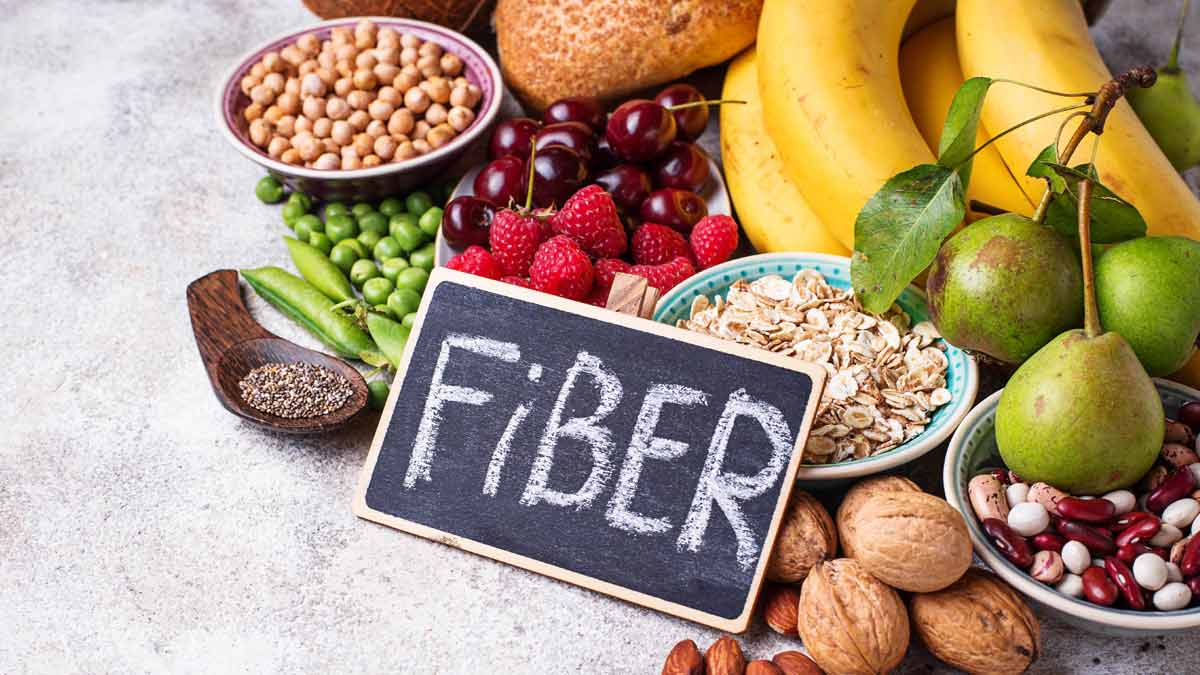
Embark on a journey into the realm of nutrition and wellness where foods with high fibre are taking centre stage. Beyond their delicious appeal, foods like lentils, beans, berries, and oats share a common thread – they are potent sources of dietary fibre, a type of carbohydrate that eludes the digestive process. Found abundantly in an array of fruits, vegetables, grains, and seeds, fibre manifests in both soluble and insoluble forms, each carrying unique benefits. This guide delves into the advantages of embracing a high-fibre diet and provides insights into seamlessly incorporating fibre-rich foods into your daily culinary repertoire.
Table of Content:-
Defining a High fibre Diet: A Nutritional Milestone
A high-fibre diet is more than a nutritional choice; it's a commitment to meeting or surpassing the recommended daily intake of dietary fibre. Ms Rajeshwari V Shetty, HOD (Nutrition & Dietetics), SL Raheja Hospital, Mahim advocates the following daily fibre amounts for adults:

- 25 grams for females aged 19–50
- 21 grams for females aged 51 and older
- 38 grams for males aged 19–50
- 30 grams for males aged 51 and older
Benefits of High Fibre Diets
Despite the abundance of high-fibre foods, research indicates that the average American falls short of the recommended daily intake. The typical daily fibre consumption hovers around 15 grams, roughly half of the suggested amount for adults.
Why is fibre indispensable, and what makes a high-fibre diet a cornerstone of health? A comprehensive literature review from 2020 unearthed a myriad of benefits, showcasing fibre's prowess in:
Also Read: Mediterranean To Paleo: 5 Diets To Look Out For In 2024
- Enhancing gut motility
- Mitigating gut inflammation
- Fostering a healthier gut flora
- Alleviating constipation
- Facilitating weight management
- Balancing blood sugar levels
- Reducing cardiovascular risk
- Lowering the risk of colon cancer
These revelations underscore that the advantages of fibre transcend gut health, underscoring the importance of meeting the recommended daily intake.
Foods Rich In Fibre
Curating a high-fibre diet becomes an exciting journey with a myriad of delectable options. Here are some culinary stars known for their high-fibre content:
- Lentils: A nutritional powerhouse with 20.5 grams of fibre per cup (uncooked).
- Oats: Versatile and affordable, offering 16.5 grams of fibre per cup (uncooked).
- Black beans: A plant-based protein source, delivering 15 grams of fibre per cup (cooked).
- Kidney beans: Versatile and nutrient-rich, providing 13.1 grams of fibre per cup (cooked).
- Chickpeas: A protein and fibre-packed delight, contributing 12.5 grams of fibre per cup (cooked).
- Avocado: Creamy and nutrient-dense, offering 10 grams of fibre per cup.
- Chia seeds: A soluble fibre source, boasting 9.75 grams of fibre per ounce (dried).
- Raspberries: A sweet treat with 8 grams of fibre per cup.
These foods not only add essential fibre to your diet but also bring a wealth of nutrients to the table.
Also Read: Irritable Bowel Syndrome (IBS) Diet: Foods To Eat And Avoid
Foods To Avoid On A High-Fibre Diet
While a high-fibre diet encourages variety, individuals may choose to moderate their intake of certain foods lower in fibre, such as meat, fish, poultry, dairy, eggs, refined grains, processed snacks, fruit juices, and fried foods. Striking a balance and enjoying a diverse range of foods remains the key to a successful high-fibre diet.
Bottomline
Fibre, an indigestible carbohydrate, emerges as a powerhouse offering myriad health benefits, extending from nurturing gut flora to fortifying heart health and beyond. If achieving your daily fibre target feels challenging, rest assured, that you're not alone. Elevate your fibre intake by focusing on fruits, vegetables, whole grains, and seeds. Embracing a high-fibre diet means providing your body with the essential nutrients it craves for optimal well-being. Embark on a journey towards a healthier, fibre-rich lifestyle today.
Also watch this video
How we keep this article up to date:
We work with experts and keep a close eye on the latest in health and wellness. Whenever there is a new research or helpful information, we update our articles with accurate and useful advice.
Current Version
